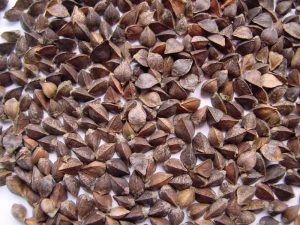
Bilirubin Meters Consumption Market Synopsis:
In this report, LP Information covers the present scenario with the base year being 2017 and the growth prospects of global Bilirubin Meters market for 20182023.
Bilirubin formerly referred to as haematoidin and discovered by Rudolf Virchow in 1847 is a yellow compound that occurs in the normal catabolic pathway that breaks down heme in vertebrates. This catabolism is a necessary process in the bodys clearance of waste products that arise from the destruction of aged red blood cells. First the hemoglobin gets stripped of the heme molecule which thereafter passes through various processes of porphyrin catabolism, depending on the part of the body in which the breakdown occurs. For example, the molecules excreted in the urine differ from those in the faeces. The production of biliverdin from heme is the first major step in the catabolic pathway, after which the enzyme biliverdin reductase performs the second step, producing bilirubin from biliverdin.
Bilirubin Meters measure the bilirubin level in patient body.
The classification of bilirubin meters includes transcutaneous and benchtop, and the proportion of transcutaneous in 2016 is about 87%, and the proportion is in increasing trend from 2012 to 2016.
Bilirubin meters are widely used in hospital, clinic and other field. The most proportion of bilirubin meters is used in hospital, and the consumption proportion is about 53% in 2016.
North America is the largest consumption place, with a consumption market share nearly 33% in 2016. Following North America, Europe is the second largest consumption place with the consumption market share of 28%.
Market competition is intense. Philips, Drager, Konica Minolta, etc. are the leaders of the industry, and they hold key technologies and patents, with highend customers; have been formed in the monopoly position in the industry.
Over the next five years, LPILP Information projects that Bilirubin Meters will register a xx% CAGR in terms of revenue, reach US$ xx million by 2023, from US$ xx million in 2017.
This report presents a comprehensive overview, market shares, and growth opportunities of Bilirubin Meters market by product type, application, key manufacturers and key regions.
To calculate the market size, LP Information considers value and volume generated from the sales of the following segments:
Segmentation by product type:
Benchtop
Transcutaneous
Segmentation by application:
Hospital
Clinic
Other
This report also splits the market by region:
Americas
United States
Canada
Mexico
Brazil
APAC
China
Japan
Korea
Southeast Asia
India
Australia
Europe
Germany
France
UK
Italy
Russia
Spain
Middle East & Africa
Egypt
South Africa
Israel
Turkey
GCC Countries
The report also presents the market competition landscape and a corresponding detailed analysis of the major vendor/manufacturers in the market. The key manufacturers covered in this report:
Philips
Drager
Konica Minolta
Natus Medical
Apel
Reichert Technologies
Mennen Medical
Advanced Instruments
GINEVRI
Lowenstein
AVI Healthcare
Qili Medical
Beijing M&B
DAS
Kejian Hitech
Micro Lab
Olidef
Dison
In addition, this report discusses the key drivers influencing market growth, opportunities, the challenges and the risks faced by key manufacturers and the market as a whole. It also analyzes key emerging trends and their impact on present and future development.
Research objectives
To study and analyze the global Bilirubin Meters consumption value & volume by key regions/countries, product type and application, history data from 2013 to 2017, and forecast to 2023.
To understand the structure of Bilirubin Meters market by identifying its various subsegments.
Focuses on the key global Bilirubin Meters manufacturers, to define, describe and analyze the sales volume, value, market share, market competition landscape, SWOT analysis and development plans in next few years.
To analyze the Bilirubin Meters with respect to individual growth trends, future prospects, and their contribution to the total market.
To share detailed information about the key factors influencing the growth of the market growth potential, opportunities, drivers, industryspecific challenges and risks.
To project the consumption of Bilirubin Meters submarkets, with respect to key regions along with their respective key countries.
To analyze competitive developments such as expansions, agreements, new product launches, and acquisitions in the market.
To strategically profile the key players and comprehensively analyze their growth strategies.



